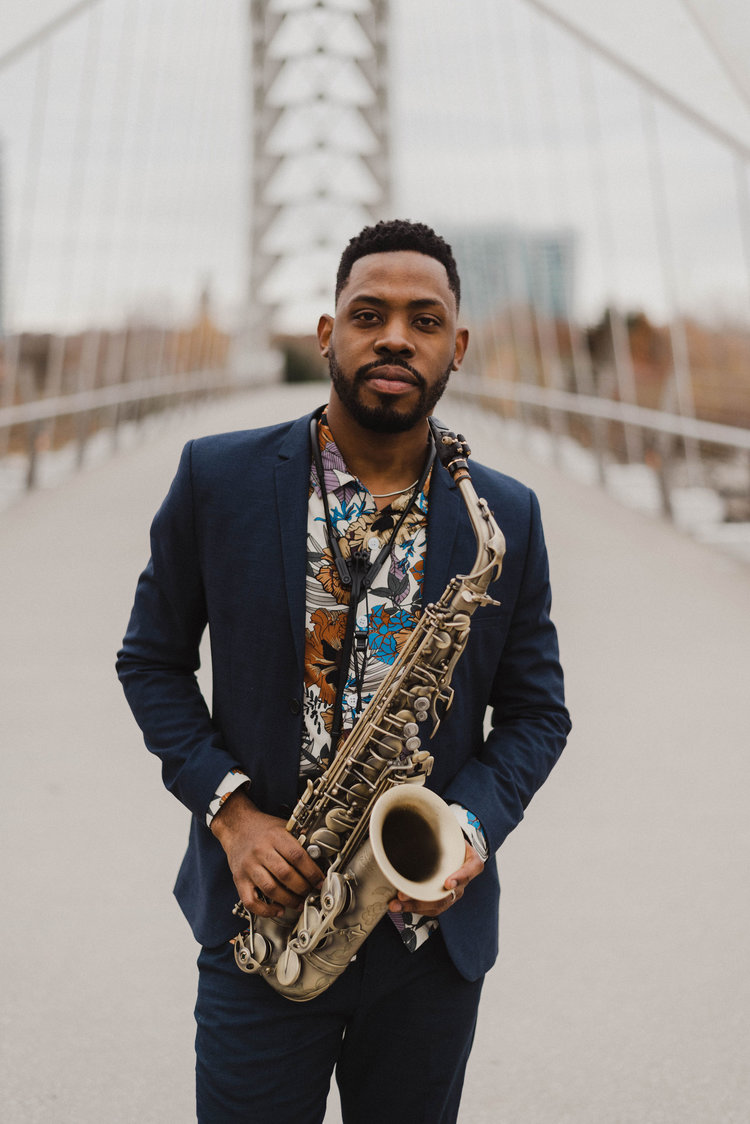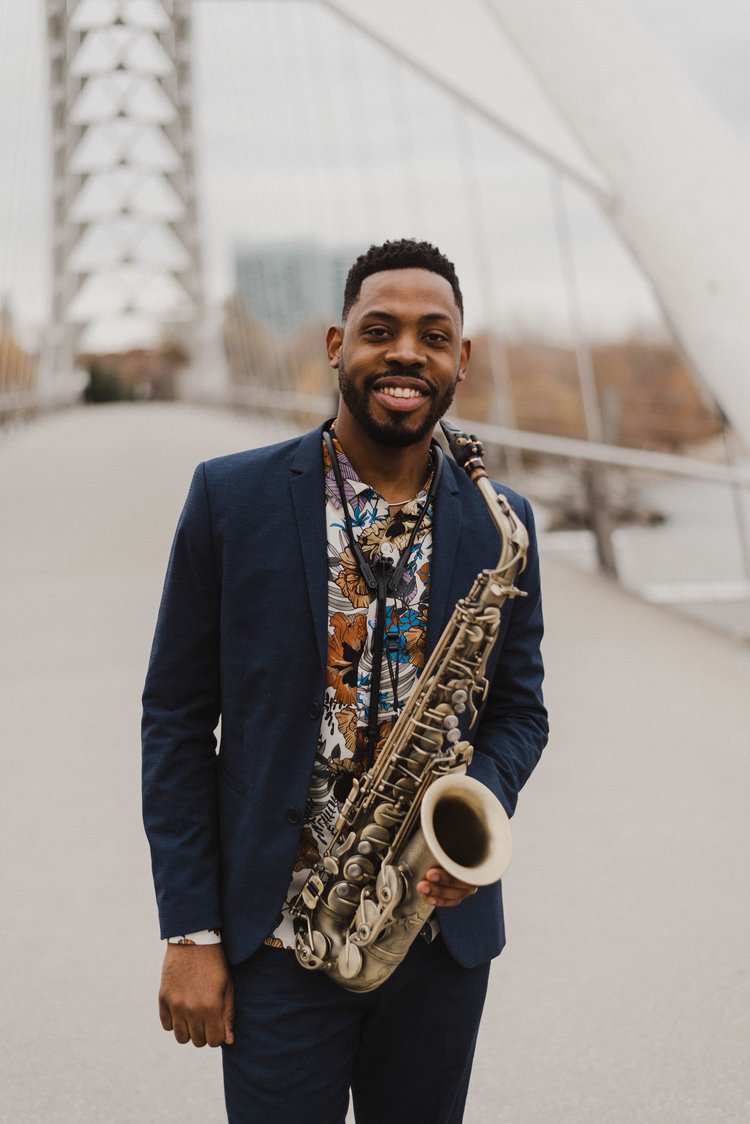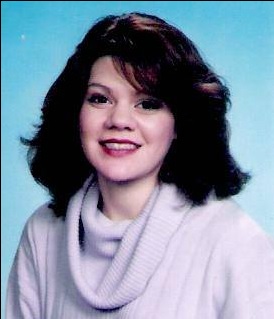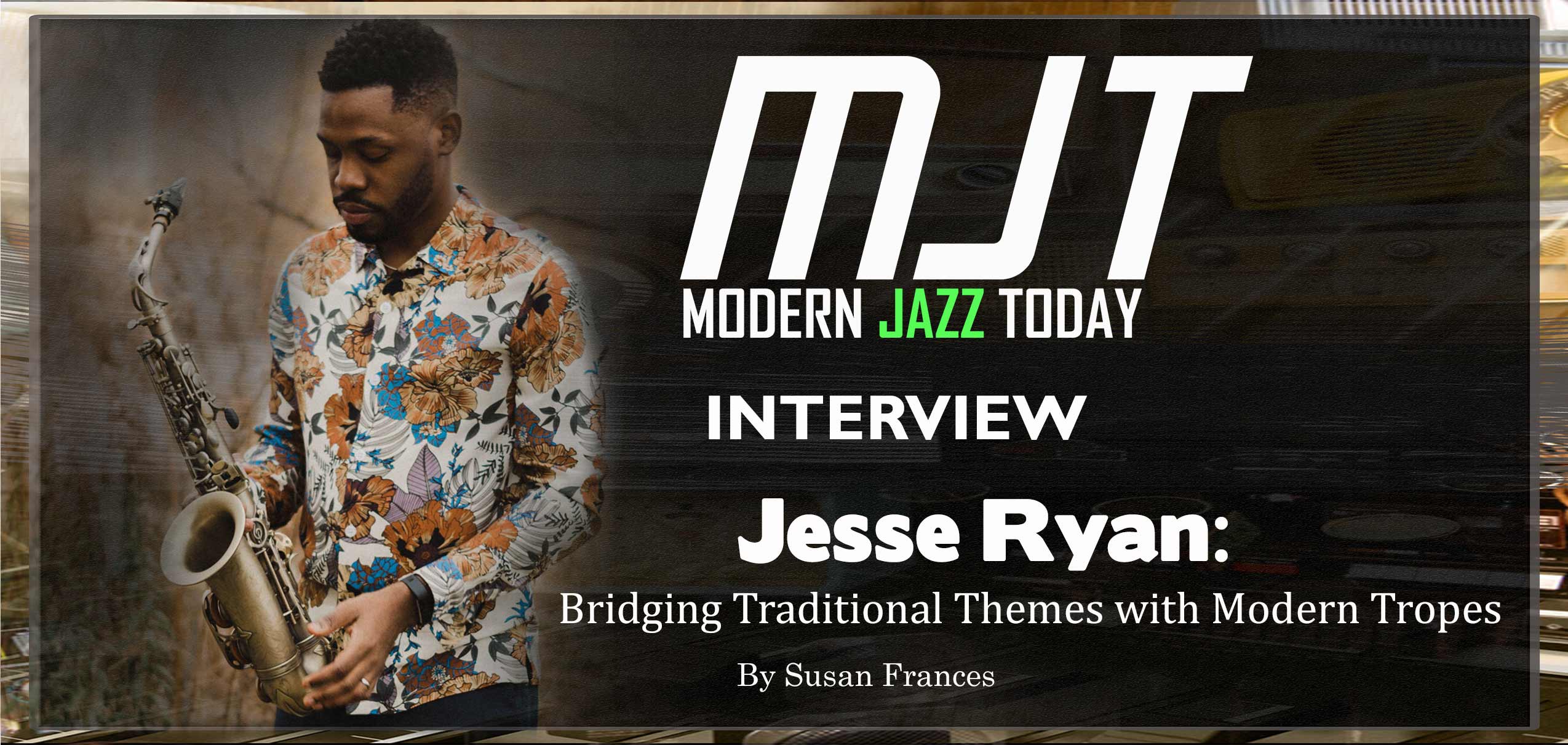Jesse Ryan: Bridging Traditional Themes with Modern Tropes
By Susan Frances
 Composer, multi-instrumentalist, and bandleader Jesse Ryan is quoted in his biography, found on his website HERE, saying, “I consider myself to be bilingual; music is my second language and is the universal language of the soul. Nothing else moves people like music does.”
Composer, multi-instrumentalist, and bandleader Jesse Ryan is quoted in his biography, found on his website HERE, saying, “I consider myself to be bilingual; music is my second language and is the universal language of the soul. Nothing else moves people like music does.”
It’s fair to say that Ryan is multi-cultural on several levels. First, absorbing the musical influences from his homeland of the Caribbean Islands of Trinidad and Tobago, and then discovering a myriad of music cultures while studying at Berklee School of Music in Boston, Massachusetts, and Humbar College in Toronto, Canada. He has another layer to his multi-cultural constitution that integrates his faith’s influences, based in the Pentecostal church. Fuse all of these elements together, and audiences gain insight into what moves Ryan to make music.
He establishes, “I actually grew up in Trinidad and didn’t visit Tobago till I was in my mid-teens.” He proceeds, “Growing up in Trinidad and being the grandson of the Calypsonian, Cliffton Ryan aka. The Mighty Bomber, I was very aware of the rhythmic, harmonic, and melodic connections between what was happening in jazz and calypso.”
It was not only his grandfather who influenced his taste in music, as he admits, “I think I grew up in a musical family and all my aunts and uncles on my dad’s side sang or played instruments, so I always was exposed to a lot of music.”
“However,” he earmarks, “the very first profound and memorable musical experience I had growing up was hearing a Steelband perform on the street in my neighborhood when I was about eight years old. I remember it being a very out-of-body experience like everything around me was moving slowly, and I remember noticing how, even though each instrument played individual parts, it all worked together.”
“That experience inspired me,” he submits, “to want to learn how to play the steelpan, which I had the opportunity to do around the age of ten years old. It was only when I got to high school that my then music teacher Michelle Huggins-Watts, who is an award-winning steelpan arranger, encouraged me to pursue music seriously. It’s hard to remember specific things from that period besides her constant mentorship and support that encouraged me to pursue a life as a professional musician.”
Besides learning to play the steelpan drum, Ryan explored making music further, discovering the saxophone as well. He harks back, “I started playing the saxophone by a fluke, really. I really wanted to play the trumpet because I was inspired by an older student in my high school that was composing and playing the trumpet at a high level at the time. I think my dad misheard me when I asked to play the trumpet, and he brought home a DVD on how to play the saxophone. I was excited nonetheless and had access to a saxophone through my church and picked it up on my own for the first couple of months. I got more traditional lessons later on.”
“I think it’s important to note,” he highlights, “that I was already playing steelpan, guitar and singing in choirs, etc., so the saxophone became my new voice. I’m not sure if there’s anything tangible I can point to that I like about the saxophone in comparison to the instruments I play. I just feel most connected to it in a very deep way. Maybe that’s because the alto sax, in particular, is very close to the range of my singing voice.”
Henceforth, Jesse Ryan focused on becoming a professional saxophonist, attending Berklee and Humbar in pursuit of honing his skills. “I moved to Toronto in 2013,” he remembers, “after completing the first year of my BA at Berklee in Boston, to complete my undergraduate degree at Humber College, and so I could be in a vibrant music city that had a strong jazz tradition.”
“As an international student,” he describes, “it was tough to afford the tuition fees, and Humber’s program was both great and more affordable. Being integrated into the community at the college really laid the foundation for going further in my music career. Opportunities like playing lead alto in the school’s big band while playing and recording with guest artists like Joe Lovano, Donny McCaslin, John Scofield, and Larry Goldings really opened my eyes to a new standard of excellence and to what was possible.”
“Throughout my time in college and after graduating,” he stipulates, “I’ve had many mentors like Shelly Berger, Roberto Occhipinti, Nick Morgan, Luis Deniz, Larnell Lewis, to name a few that have all helped me to understand what I need to know and develop habits and perspectives that serve my individual and personal goals.”
“As I was coming up in music,” he points out, “I was introduced to musicians like Franky Francis, Clive Zanda, Michael Low Che Tung, Ralph Robertson, Arturo Tappin, and Etienne Charles, to name a few, who were already creating, refining, and popularizing the tradition of jazz with a Caribbean accent.”
He perceives, “I think that jazz, or if you want to say the tradition of black American music, is built on the idea of bridging cultures. It is music that was born out of the African-American experience of finding themselves in the New World while still trying to keep their own cultural identity alive.”
How he preserves his cultural identity plays a significant role in his music, as he regards, “I’ve been writing and playing music that celebrates my Trinibagonian heritage since before I moved to Toronto, and I had a modest body of work that I wanted to share when I graduated in 2017. I put a band together, and we played the music for two years before I went into the studio to record it. That process of presenting the music to various audiences and having many different musicians put their stamp on the music was very instrumental in feeling ready to share it with the world.”
celebrates my Trinibagonian heritage since before I moved to Toronto, and I had a modest body of work that I wanted to share when I graduated in 2017. I put a band together, and we played the music for two years before I went into the studio to record it. That process of presenting the music to various audiences and having many different musicians put their stamp on the music was very instrumental in feeling ready to share it with the world.”
By fusing modern tropes with traditional themes, Ryan tailored himself to be the bridge between the two worlds. So it was logical for him to name his debut release Bridges.
He examines, “For my Bridges project, I found myself acting like a bridge, so to speak, reaching backwards and forwards – into my roots to find something that could ground me while exploring the new territory of the modern jazz idiom. This led me to study a very specific musical tradition from my homeland called Tambrin music. Tambrin drumming, from tambourine, is unique to Tobago, the smaller of the two islands of Trinidad & Tobago, and is a tradition that has remained largely unchanged from when it began in Colonial times.”
His affinity for Tambrin drumming led him to the Mt. Cullane Tambrim Band, who play on Bridges. “I met the Mt. Cullane Tambrin Band,” he recollects, “back in June 2019 through the pianist John Arnold. He was someone I reached out to as a cultural griot on the island of Tobago when I began researching Tambrin music. John was the one that sourced the band for me, and I believe he chose them because they had multiple generations of musicians in the band.”
The Mt. Cullane Tambrin Band recorded their parts at the Shaw Park Cultural Complex in Tobago, which he commends, “The Shaw Park Cultural Complex is an iconic cultural venue on the island of Tobago and John Arnold, who was my contact for coordinating the recording session on the island, suggested it would be the perfect spot to record the Tambrin session. The rest of the band was recorded at Canterbury Studio in Toronto before the tambrin session.”
He postulates, “Having a mix of musicians from the old and new guard of Tambrin musician was appropriate for an experimental project. To my knowledge, my project is the first release of its kind that features tambrin drumming in a modern jazz setting.”
 Interpreting traditional themes in a modern language is also heard on the track “The Way” from Bridges. “‘The Way’ is a funky ode to the early Christians who were originally called followers of ‘the way,’ he characterizes, “This composition features a Tony Williams-esque groove, a catchy melody, and a rapidly changing chord progression — all intended to mirror what it feels like to navigate being a follower of ‘the way’ in a postmodern world.”
Interpreting traditional themes in a modern language is also heard on the track “The Way” from Bridges. “‘The Way’ is a funky ode to the early Christians who were originally called followers of ‘the way,’ he characterizes, “This composition features a Tony Williams-esque groove, a catchy melody, and a rapidly changing chord progression — all intended to mirror what it feels like to navigate being a follower of ‘the way’ in a postmodern world.”
He cites, “I grew up in the Pentecostal church, and my faith is very much still a very big part of my life. The constant groove of the song represents my faith as the constant in my life. However, the rapidly changing chord progression represents what my faith journey sometimes feels like – navigating a fast-paced, ever-evolving, and at times hostile world can be a bit slippery, but I’m here to follow ‘the way’ despite.”
Joining Ryan on the track is vocalist Joanna Majoko, whom he recounts, “I met Joanna at a show a couple of years ago when she had just moved to Toronto and quickly realized what an amazing talent she is. Joanna is a joy to work with and is a consummate jazz vocalist, in my opinion, in that she has a musical palette that reflects the gospel/spiritual origins of jazz. That aesthetic was really important for me on this track.”
Foraging deeper into the spiritual origins of jazz, Ryan probed vigorously into the musical cultures of the Latin world, which is evidenced in his track “Seeds.” He proclaims, “‘Seeds’ is a nod to my brothers and sisters from South and Central America as it features sections that move between a Latin and swing groove. This song was written by combining many short melodic ideas or seeds that had been sown into the ground of my musical ear, so to speak. This compositional approach was informed by the idea that every thought or action, whether negative or positive, is a seed that has the potential to bare fruit in our lives.”
Ewen Farncombe plays the piano on “Seeds,” performing a twinkling solo on the piece. “I met Ewen at Humber College,” Ryan recalls, “and he has been the staple pianist in my groups since 2016. I really wanted to showcase the musicians in the project because their contributions to the music have helped shape the composition itself. It’s hard not to want such a virtuoso musician to take a solo on a tune like ‘Seeds.'”
Also featured on “Seeds” is guitarist Lucian Gray, whom Ryan asserts, “I actually became aware of Lucian Gray even before I moved to Toronto via YouTube video. At the time, I believe he had just finished Berklee and moved back to Toronto. I was accustom to playing with Andrew Marzotto, but he was on tour at the time of the recording sessions, so I took the opportunity to ask Lucian to join the band for the record, which I am absolutely and grateful for. Lucian is an incredible musician and virtuoso guitarist and having him on this track was a no-brainer for me.”
He confesses, “In some ways, I still don’t feel like I was ready to release the album, but like one of my mentors would say, an album is never complete; it’s just finished. I think that’s a play on Leonardo da Vinci’s quote, ‘Art is never finished, only abandoned.’ I wanted to move on to new things and write some new music, and releasing that album was my way of closing that chapter of my journey.”
 While this leg of his journey is completed, Ryan looks forward to embarking on many more journeys in the near future as he attests, “I’m planning to present this music live once opportunities open up for that to happen. Hopefully, this will happen sooner than later. Having a live audience really changes the context and makes playing the music a conversation between us and the audience. I love that dynamic, and I can’t wait to do it again.”
While this leg of his journey is completed, Ryan looks forward to embarking on many more journeys in the near future as he attests, “I’m planning to present this music live once opportunities open up for that to happen. Hopefully, this will happen sooner than later. Having a live audience really changes the context and makes playing the music a conversation between us and the audience. I love that dynamic, and I can’t wait to do it again.”
Though the COVID-19 shutdowns have delayed opportunities to perform live, Ryan’s journey moved on as he beams, “In 2020, I received the Toronto Arts Foundation’s Emerging Jazz Artist award which helped me to complete and release my debut album. It’s been a very challenging yet very rewarding journey.”
In retrospect, he considers, “I’ve definitely grown in terms of my awareness of how my creative process influences the end product in terms of what the album sounds like, and as a bandleader how I write or lead the band helps me bring out the best from my bandmates.”
“This awareness,” he ascertains, “inevitably highlights some of my weaknesses as well, and I’ve been working on them with the help of a saxophone and composition teacher. The process of composing, performing, workshopping, pre and post-production, recording, and releasing the album has given me an almost 360-degree view of what it takes to be an indie artist, and I now feel ready to build on that; with new projects.”
Possessing the assets of a multi-lingual composer, musician, and bandleader, Jesse Ryan celebrates the music culture of his roots, interpreting traditional themes with a modern perception. The fusion he creates speaks to the human soul. His motivation for doing so, as Ryan claims, is because “Nothing else moves people like music does.”
About Susan Frances:
 Born in Brooklyn, New York and raised in eastern Long Island, I always enjoyed writing and made several contributions to my high school literary magazine, The Lion’s Pen. Influenced by writers of epic novels including Colleen McCullough and James Clavell, I gravitated to creative writing. After graduating from New York University with a BA in Liberal Arts, I tried my hand at conventional jobs but always returned to creative writing. Since 1998, I have been a freelance writer and have over three thousand articles to various e-zines including: Jazz Times, Blogcritics, Yahoo Voices, Goodreads.com, Authors and Books (books.wiseto.com), TheReadingRoom.com, Amazon.com, Epinions.com, Fictiondb.com, LibraryThing.com, BTS emag, BarnesandNoble.com, RomanticHistoricalReviews.com, AReCafe.com, Hybrid Magazine, and BookDepository.com. In 2013 and 2014, I was a judge in the Orange Rose Writing Competition sponsored by the Orange County chapter of the Romance Writers of America located in Brea, California.
Born in Brooklyn, New York and raised in eastern Long Island, I always enjoyed writing and made several contributions to my high school literary magazine, The Lion’s Pen. Influenced by writers of epic novels including Colleen McCullough and James Clavell, I gravitated to creative writing. After graduating from New York University with a BA in Liberal Arts, I tried my hand at conventional jobs but always returned to creative writing. Since 1998, I have been a freelance writer and have over three thousand articles to various e-zines including: Jazz Times, Blogcritics, Yahoo Voices, Goodreads.com, Authors and Books (books.wiseto.com), TheReadingRoom.com, Amazon.com, Epinions.com, Fictiondb.com, LibraryThing.com, BTS emag, BarnesandNoble.com, RomanticHistoricalReviews.com, AReCafe.com, Hybrid Magazine, and BookDepository.com. In 2013 and 2014, I was a judge in the Orange Rose Writing Competition sponsored by the Orange County chapter of the Romance Writers of America located in Brea, California.





No Comments